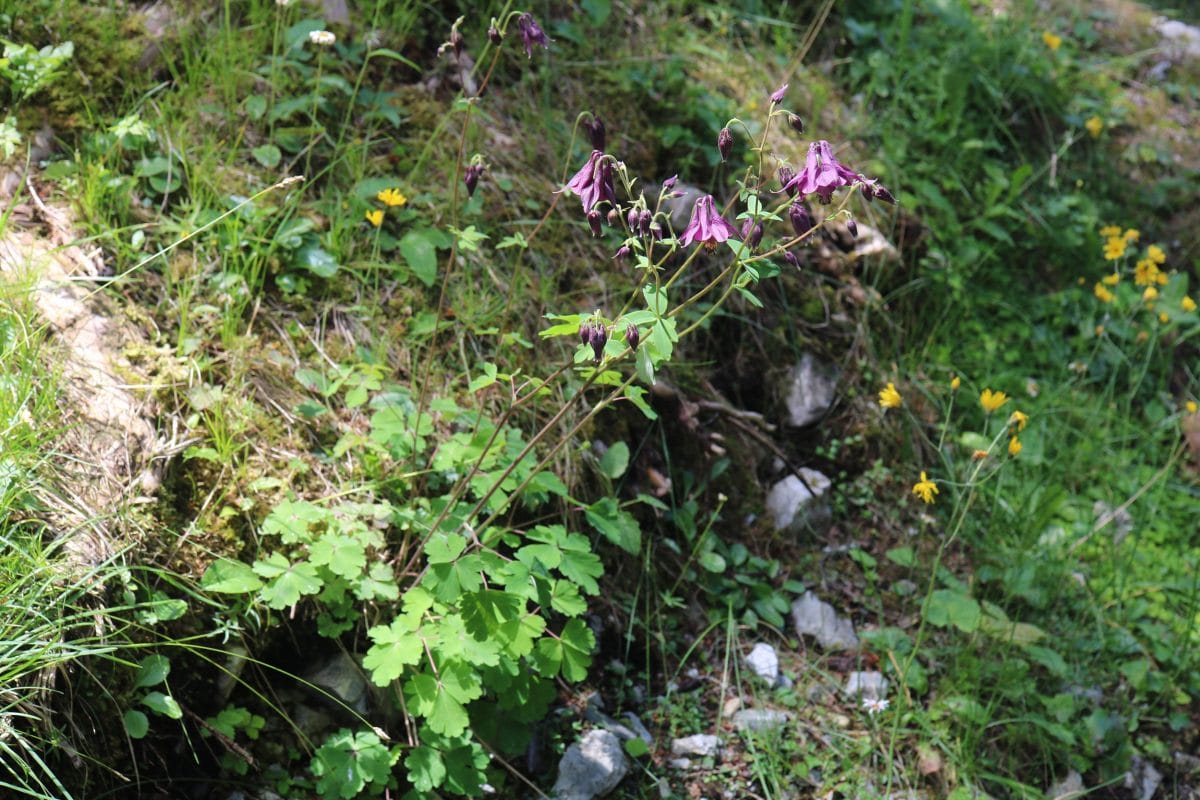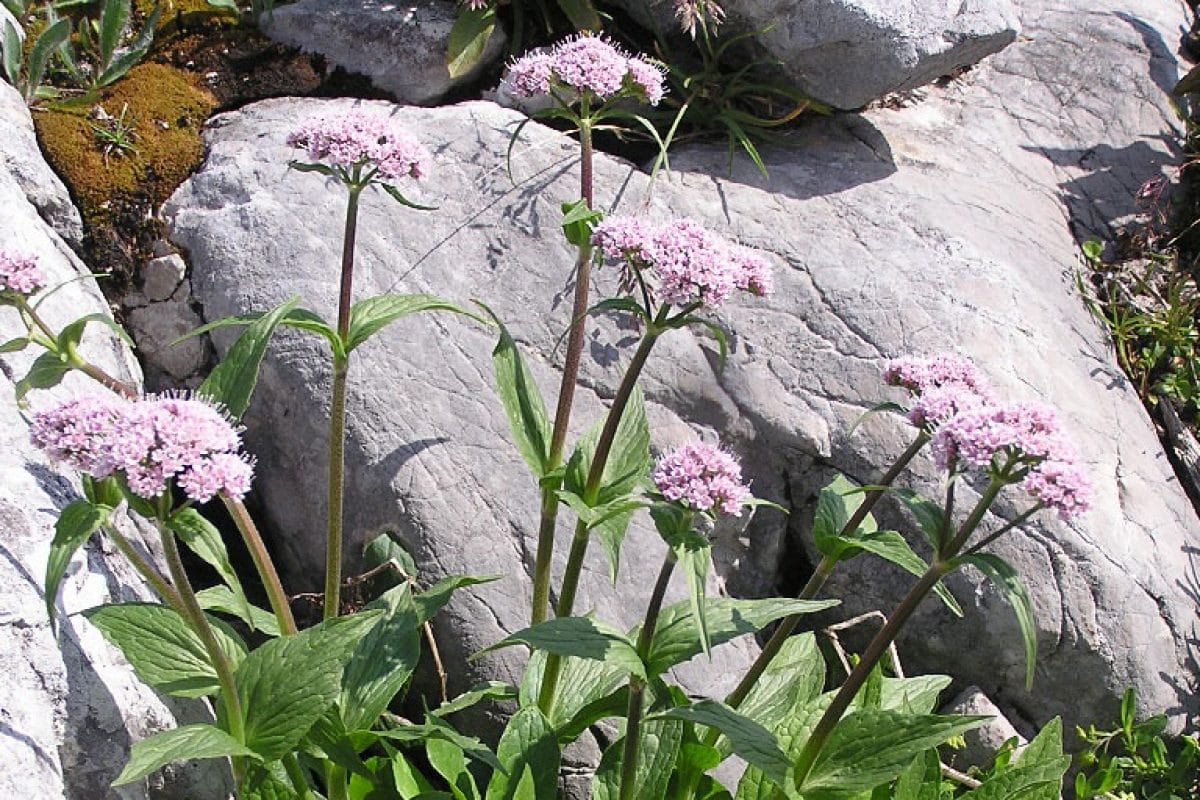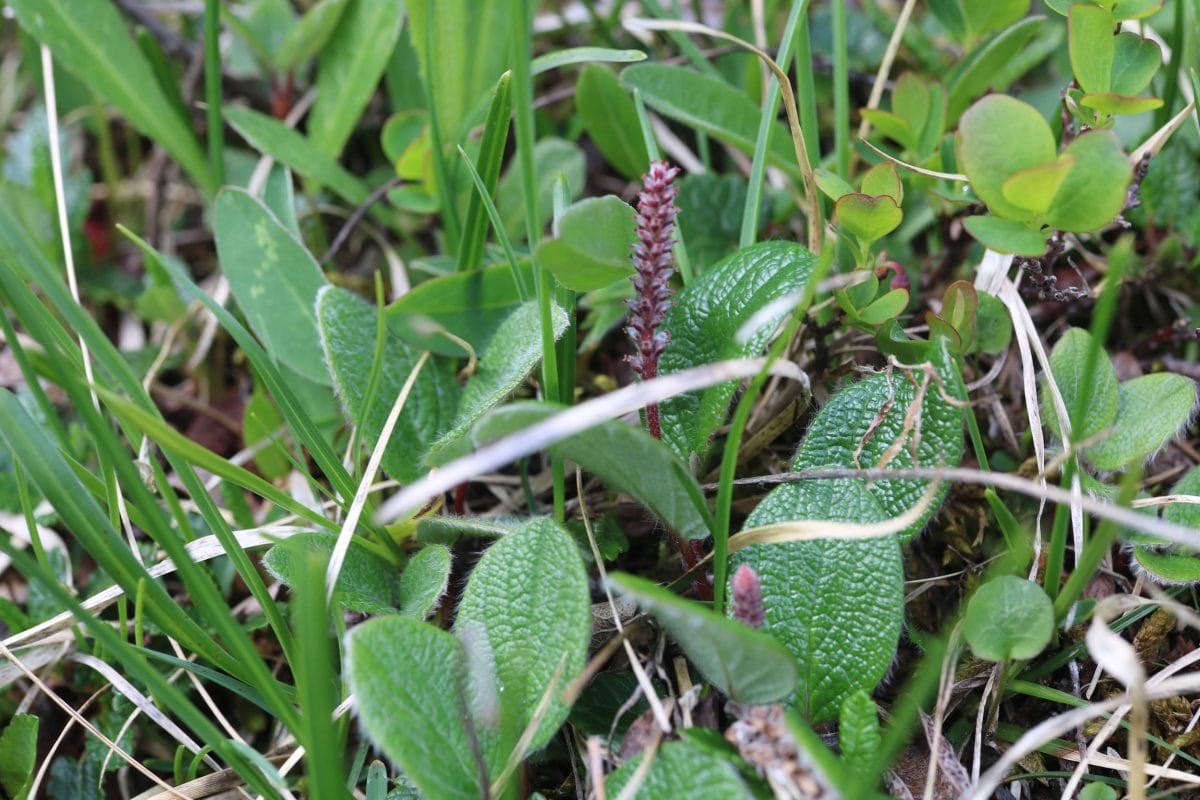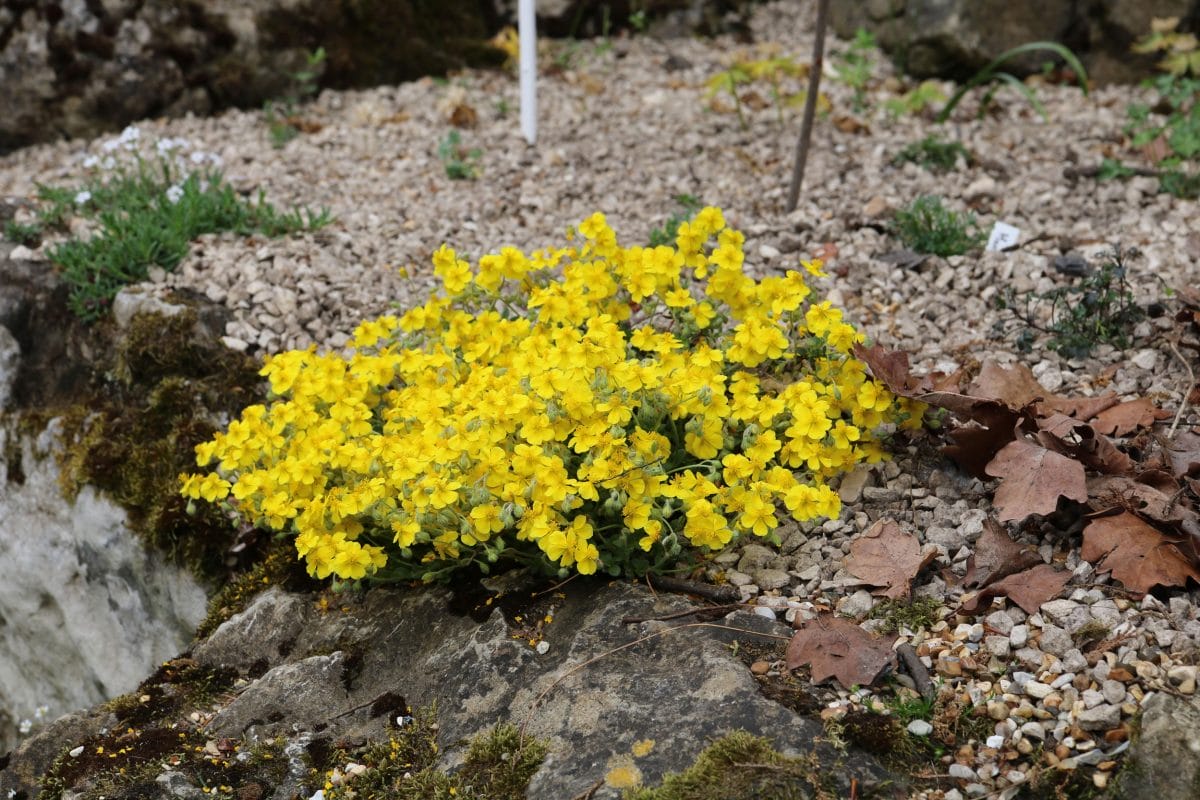One of the most frustrating sections of the Gardens to be away from during lockdown is the Rock Garden. There are around 130 species on display and a majority of them hit their peak between late March and early June.
Here I’ve picked five plants you can see in flower over the next few weeks, all from the mountains of Europe, and all plants you could try growing in your own patch.
Aquilegia atrata (dark columbine)
A plant of alpine meadows and woodland margins.
The species name – atrata – means dark, and the flowers are a distinctively dark, chocolatey colour.
Give it a spot that gets some shade and where the soil is rich and not too dry.
Our plants grow in the shade of rocks and are mulched with leaf-litter from other areas of the Rock Garden over autumn and winter. You can also see Aquilegia vulgaris (common columbine) and Aquilegia caerulea (Colorado blue columbine) elsewhere in the rock garden.

Valeriana montana (mountain valerian)
An attractive, spreading perennial, common in mountain ranges right across Europe.
It produces heads of white flowers tinged with pink that are extremely attractive to hoverflies, bees and butterflies.
Around 30cm tall in flower, it gradually spreads by rhizome (an underground stem) and can work as a ground cover. It’s slower and better-behaved in this regard than its lowland relative Valeriana officinalis (common valerian), so it’s easier to accommodate in a small plot.
You can find both these valerian species at the Horniman; common valerian grows in our Medicinal Border and will be in flower in June.

Salix reticulata (net-leaved willow)
This tiny, spreading, shrubby willow is found in the arctic and high in the mountains of Europe, North America and Asia.
It’s a wonderful plant to get up close to, especially as it comes into leaf early in the year.
The emerging growth is covered in woolly white hairs which persist on the undersides of the leaves as they unfurl. Later the leaves turn dark green and show the characteristic net (or reticulate) veining that gives the plant its name.
Easy to grow once established but they will appreciate a little shelter from the hot summer sun, especially in the south of the UK.


Helianthemum nummularium (common rock rose)
You can find this plant growing as cheerfully in the UK chalk grassland at 150m above sea level, as in the limestone Alps at 2,000m.
It’s an easy one to spot in our Rock Garden: low-growing, clinging to a ledge, smothered in golden yellow flowers.
If you want to grow it at home it needs full sun but is otherwise undemanding, needing little water and no great depth of soil.
You can see its white-flowered relative Helianthemum appeninum growing off to the left nearby – a slightly larger, shrubbier plant, also native in the UK, though rarer in the wild.


Ranunculus alpestris (alpine buttercup)
There are a few plant families particularly well-represented in the mountains of Europe, and the buttercup family Ranunculaceae is one.
Ranunculus alpestris is a beautiful little buttercup, with white flowers held no more than 10cm above a neat dome of lobed, dark green leaves.
It is a true mountain specialist, found at and above the treeline, from 1,500-2,500m. It usually grows in short turf or on gravelly slopes.
Relatively easy in the garden as true alpines go; just make sure it stays moist in spring, position it so it will be shaded for at least part of the day, and watch for slugs and snails, who will eat both leaves and petals.

Over to you
Do you want to have a go at planting your own rock garden, with plants like these?
Find some stockists, seed sellers and plant societies:
Specialist Nurseries
- Slack Top Nursery
- Pottertons Nursery
- Harperley Hall Farm Nursery
- Edrom Nursery
- The Alpine and Grass Nursery
- Kevock Garden Plants
Sources of seed
- Seedaholic
- Chilterns seeds
- Jelitto perennials
- Plant society seed exchanges (see below)
Plant societies


